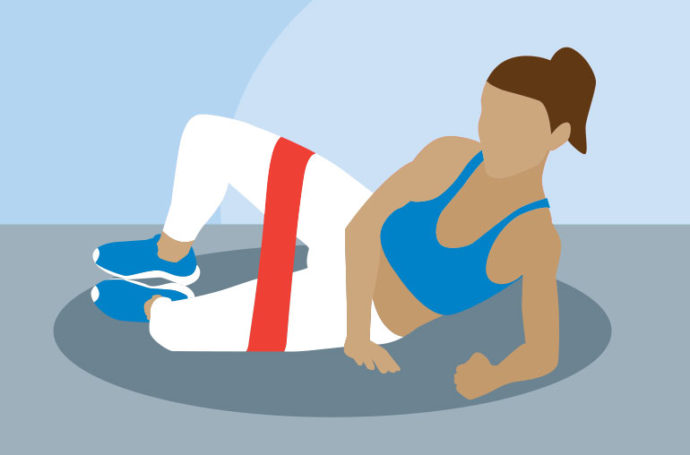
When starting resistance band workouts, you’ll want to aim for two strength-based training sessions every week that are about 30 minutes each. This applies to people who are beginners to exercise, as well as those who are already regularly working out, but new to resistance band training. The difference (we’ll get to this below) is the intensity you train at. This amount of strength training aligns with recommendations from the U.S. Department of Health and Human Services that advise adults do strength workouts two or more days per week that focus on all major muscle groups. (These include legs, back, abdomen, chest, shoulders, and arms.)
Resistance bands are generally fairly safe to use, especially when you start with a low-resistance band. The safest way is to gradually increase the resistance, intensity, and quantity of workouts. However, there is a simple solution: don't use a move with a band if it feels too intense immediately away. Once you've mastered the motion safely, add a band. If you can't finish one repetition (rep) of squats with a looped resistance band around your thighs, execute the set without the band. When the set becomes less difficult, try adding the band.
Warm-up your body with a short, vigorous walk before your lesson, suggests Joyner. You could also do some dynamic stretches like squats, lunges, and arm circles. "These tell your body it's going to work out," he explains. The goal is to loosen up your muscles before beginning to strain them more strongly with specialized exercises. Additionally, Joyner recommends starting each session with a few minutes of balance training. This could entail standing next to a table (holding on if necessary) and elevating one knee to hip height and holding it while standing tall. You can also take a wide stance and slowly transfer your weight to one side while elevating the other foot. Balance training is beneficial for everyday function as well as maintaining safe movement patterns during resistance exercise. Balance training teaches your neuromuscular system to stay steady on your feet throughout each move, improving the workout's safety.
#HongKong #ResistanceBand #Exercise #Benefits #GuardianFitnessHK #hkfitness